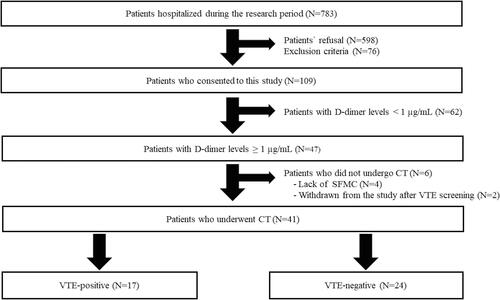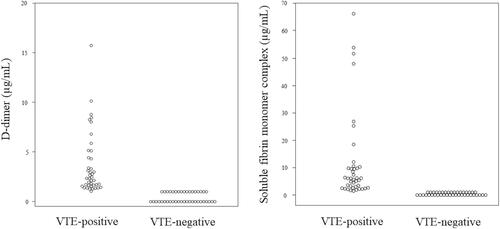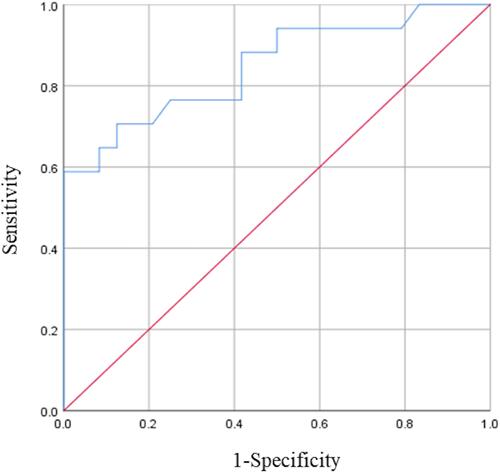Figures & data
Figure 1 Selection of participants. During the research period, 783 subjects were admitted to our hospital for the treatment of psychiatric disorders. Of these, 109 subjects without venous thromboembolism (VTE) symptoms participated in the study, and 47 subjects showed positive test results (D-Dimer ≥1). SFMC was not measured in four subjects. Two patients were withdrawn from the study after the VTE screening. Finally, 41 subjects underwent contrast computerized tomography.

Table 1 Clinical and Demographic Characteristics


